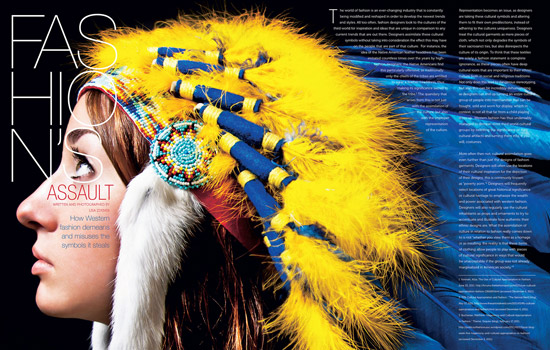RIT Student-Produced Magazine Tops Competition
Editorial design course produces winning final product—again
Lisa Zdenek
The award-winning Positive/Negative magazine features full-color photographs and accompanying articles—produced entirely by students.
Positive/Negative magazine has all the features of a professionally produced publication. Now, it has multiple accolades that honor it as such.
The annual full-color magazine, which is produced as the final product of the editorial design and editorial photography course in Rochester Institute of Technology’s College of Imaging Arts and Sciences, is the recipient of two platinum awards in the 42nd Annual Creativity International Print and Packaging Awards.
The awards are given out based on creativity, design, usability, theme/idea, execution and follow-through. Positive/Negative won the platinum “best in category” honors for both cover design and overall design.
The 36-student Editorial Design and Editorial Photography course is run as if it were a real-life professional publication. Students in the course assume various roles, such as directors, editors, designers and photographers, to produce a nearly-100-page, full-color magazine and an accompanying iPad version.
“The course is quite a challenge,” says Lorrie Frear, associate professor of graphic design. “But students get the value of a workplace experience while taking a class.”
Frear leads the course, which integrates design students with photography students, along with Denis Defibaugh, professor of advertising photography.
“Working together is great,” Defibaugh says. “I love seeing the new things that the students come up with.”
The magazine, which published its award-winning fifth issue last school year, features photos and accompanying articles that take a positive or negative stance on a topic of contention. Topics vary from the benefits of smoking, to the environmental impacts of hydrofracking, to the dangers of being overly nationalistic.
“This is a fantastic class that has greatly improved my writing skills,” says Malorie DePerna, a fourth-year advertising photography student and member of the magazine’s iPad team for the upcoming issue. “Incorporating writing with my photos has given them meaning.”
The course gives students a finished product that they can include in their portfolio—a great benefit in a program that does not have required co-ops. Students who have taken the course have gone on to work for magazines such as Time and GQ.
“Before taking this course, I had no interest in working on a magazine,” says Linsey Rampello, fourth-year graphic design student. “Now, I definitely want to pursue a career with a magazine.”
The Printing Applications Laboratory at RIT, where the magazine is printed, helps to support the course. Frear and Defibaugh also cite support from CIAS and the RIT community as being instrumental in the success of the magazine.
“I feel super privileged to have worked on this magazine,” says Chris Wairegi, one of three student production editors for the upcoming issue of the magazine. “Positive/Negative has come a long way from where it started.”
For more information and a behind-the-scenes look at the making of Positive/Negative video. Volume six of the magazine is scheduled for release in December.














